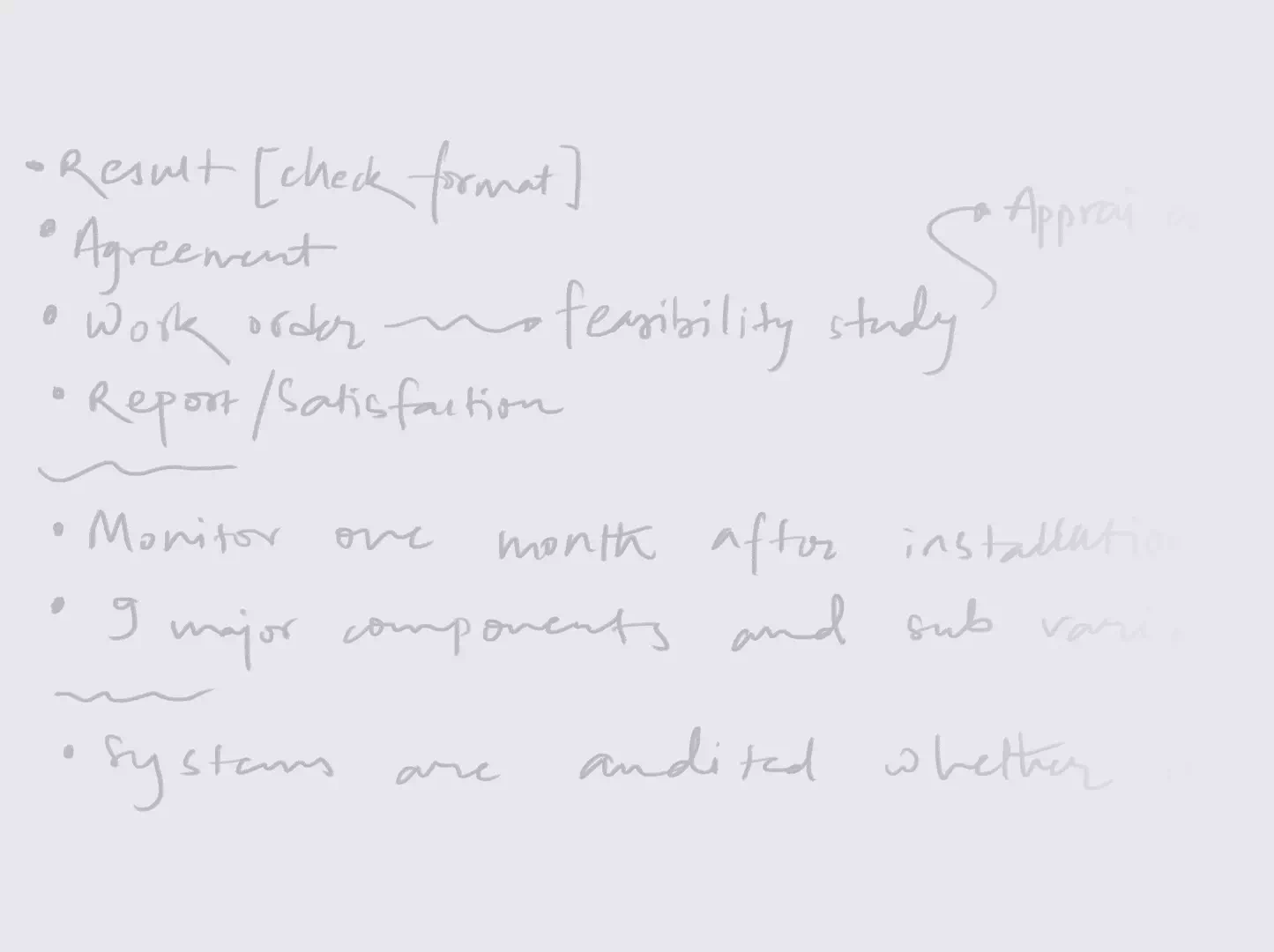Gham Power is a solar company focusing on rural community empowerment and wants to create income-generating opportunities for smallholder farmers. They have a patent-pending IoT device that enables real-time monitoring of solar-powered water pumping systems and much more. I was tasked with designing a software solution for a government agency that wanted to utilize those IoT devices to monitor the solar-power pumping systems that they provide on a subsidy basis for rural farmers.
The operations of the government agency were growing on a large scale and the cumulative cost of visiting each project site for inspection was growing as well. However, while simple remote monitoring was the initial task at hand, the requirements also evolved into project management and quality analysis. Some of the requirements were also heading towards the fringe of technical feasibility.
As the lead product designer, I had a few roles to fulfill.

With a project that wanted to grow in scope after every meeting and had to be completed on a tight deadline, I had to use all the tools in my arsenal to avoid being thrown overboard. Here are a few things that helped.
Having clear conversations with the multiple parties involved enabled me to understand their needs and their perspectives. It helped me to put myself in their shoes at times of friction, helped me avoid conflict, and ensure that things ran smoothly.
With multiple rounds of requirement gathering interviews, multiple feedback sessions, discussions, and multiple parties involved, it was important to have everything written down. Trusting in my ability to forget absolutely anything, I made sure to document everything in the form of UMLs, meeting minutes, and elaborate google sheets, and organize it for easy retrieval whenever needed. This saved my skin more than I can count. It also allowed for easy onboarding of other parties later on in the process.
Some documentations made during the early stages of design
It was important to make sure that everyone stayed on the same page for any new decisions or major updates. Scheduling routine check-ins, informing every concerned party after a major update/ breakthrough, and maintaining constant and frequent communication throughout the process helped make sure that no one was out of the loop. It also enabled a quick decision-making approach and ensured that things were always dealt with on time.
Despite the process seeming convoluted at times, the outcomes were truly rewarding. Nothing feels as good as coming up with efficient solutions to tangible problems. And that is exactly what happened.
After multiple iterations and even more conversations, we were able to create a system that satisfied the users and the people involved in creating it. The system was a successful attempt at digitizing real-world operations, automating some aspects of quality analysis, and most of all, empowering a government agency to efficiently serve rural small-holder farmers.
Some key frames from the system that was designed
Documenting design decisions early on enabled us to have detailed documentation to fall back on. The effort that was put into creating the design system and detailed user flows for this particular system will enable Gham Power to speed up the designing process for their next clients that want a more tailored solution.
Some glimpses at the final output of the design process
Working on this project was a great learning experience. Here are some key learnings from the entire design process: